With their eerie charm, Victorian houses have long been the go-to setting for horror films. Their intricate details and imposing structures provide the perfect backdrop for cinematic nightmares.
The interior architecture of Victorian homes also lends itself to the horror genre. Complex layouts and numerous rooms provide space for characters to get lost, trapped, or surprised by unseen threats. The intricate detailing and often dark color schemes can contribute to a sense of claustrophobia and unease.
In this article, we’ll explore why these grand old houses are so creepy when cast in the right shadow.

Eerie Exterior Victorian Features
Victorian houses boast several distinctive exterior elements that are visually striking and contribute to the overall sense of foreboding.
Steep, Sharp Gables
A dormer window seems like an easy escape, but slipping and sliding along gables can be life-threatening when a knife-wielding creep is in pursuit. Witness the grueling rooftop chase Rachel and Jamie endure on their anxiety-inducing flight from Michael Myers in Halloween 4.
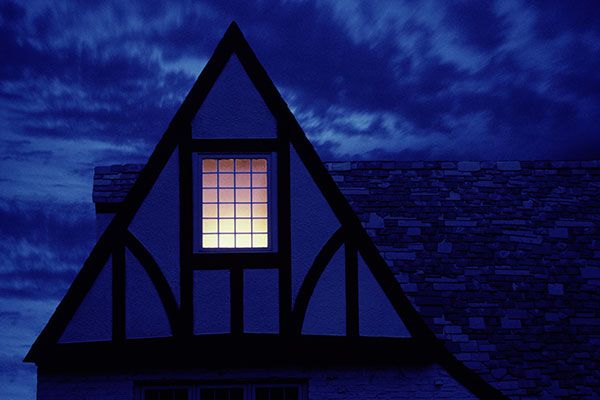
Menacing Mansard Roof
The protruding ends of a mansard roof cast shadows that recall the Bates residence in Alfred Hitchcock’s Psycho. This feature punctuated that ominous silhouette in the movie that set the gratuitously bloody precedent for the slasher film genre.
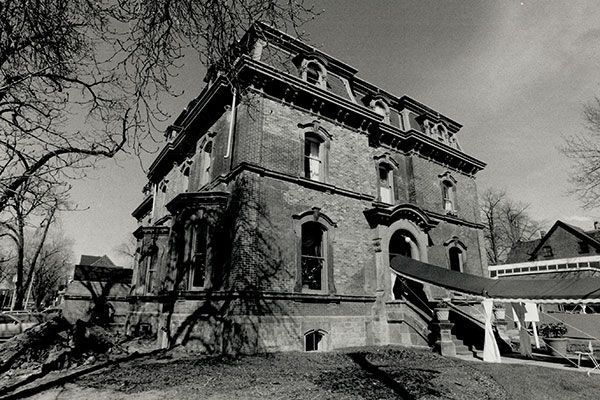
Creepy Widow’s Walk
This feature’s name is evocative of a tormented ghost waiting on her long-lost beau. But the Addams family put the architectural feature to horrifying—or great, depending on your opinion of carolers—use as a perch from which to dump a cauldron of boiling oil on the singers.
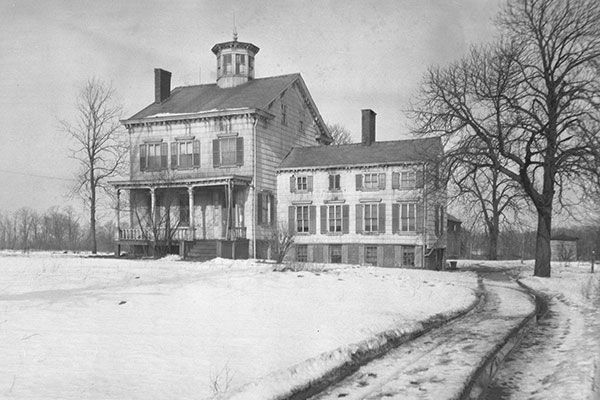
Chilling Towers and Turrets
Ornate towers and turrets are intimidating features that also provide a quick escape for villains. In the children’s Halloween classic Hocus Pocus, evil witches spot their stolen spell book, kidnap the main character’s little sister, and make a quick escape through—and end up destroying—a tower connected to the teenage hero’s bedroom.
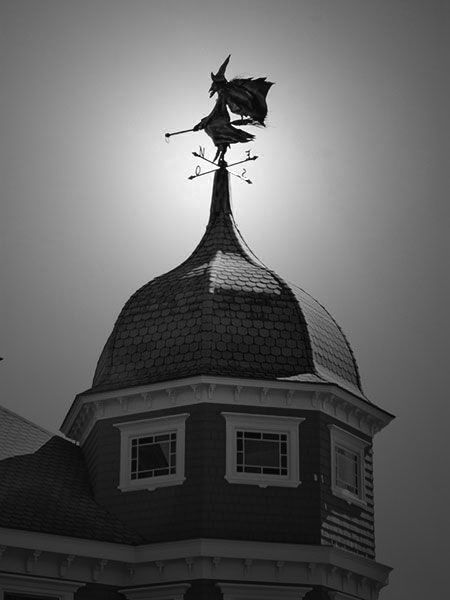
Deceptively Deep Verandas
Just when you thought you narrowly escaped the killer, a turn round a gracious Victorian porch jolts you out of any notion of safety. Shapely balustrades and ornate gingerbread trim mask the horrors found inside the home of a family of cannibals in the original Texas Chain Saw Massacre.
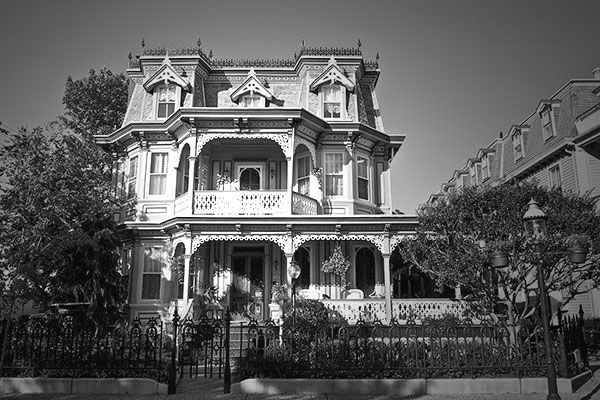
Intimidating Interior Victorian Elements
The interiors of Victorian houses are just as effective at creating a haunting atmosphere as their exteriors. The layout and design of these homes provide filmmakers with ideal opportunities to build tension and deliver scares.
Dark, Shadowy Attics
Attics in Victorian homes are often spacious, with sloped ceilings and small, oddly placed windows that create pockets of deep shadow. These spaces naturally lend themselves to horror scenarios, serving as hiding places for monsters or secrets best left undiscovered.
In Tim Burton’s Beetlejuice, the attic becomes a central location for ghostly hijinks. The untouched, cobweb-filled space serves as a base of operations for the deceased couple trying to scare away the new inhabitants of their home. The contrast between the bright, modern renovation of the rest of the house and the dark, untouched attic heightens the sense of otherworldliness.
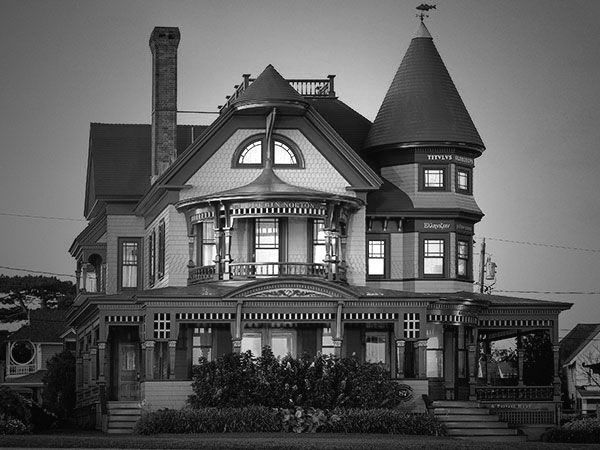
Old-house aficionados will argue that the modern makeover the home’s new owners gave the old farmhouse in Beetlejuice was a true horror. (See the before and after on the blog Hooked on Houses.) But former owners Adam and Barbara claimed the untouched attic as home base for trying to scare the living daylights out of the new inhabitants.
Banish cobwebs and ghouls in favor of finishing your attic.
Winding Staircases
Victorian homes are known for their grand, winding staircases, which often become focal points in horror films. These staircases can create suspense as characters slowly ascend or descend, unsure of what awaits them at the top or bottom. The curves and landings of these staircases offer excellent hiding spots.
Hidden Passageways
Many Victorian homes, especially larger estates, were built with secret passages and hidden rooms. Characters can suddenly vanish, unexpected threats can emerge, and dark secrets can be concealed behind seemingly innocent walls.
The presence of hidden passageways adds an element of unpredictability to the house itself, making it feel like a living, malevolent entity. Uncertainty about the true layout of the home keeps both characters and viewers on edge throughout the film.
Famous Victorian Houses in Horror Movies
Several Victorian houses have become iconic in the horror genre, serving as characters in their own right and leaving lasting impressions on audiences.
The Bates Mansion from “Psycho”
Alfred Hitchcock’s Psycho features one of the most recognizable Victorian houses in cinema history. The Bates Mansion, with its imposing silhouette and mansard roof, has become synonymous with psychological horror. The house’s looming presence on the hill above the Bates Motel sets the tone for the entire film, hinting at dark secrets.
Hill House from “The Haunting”
Based on Shirley Jackson’s novel, The Haunting of Hill House has been adapted for the screen multiple times, with the titular house always playing a central role. The sprawling Victorian mansion is described as having an unnerving layout, with rooms and hallways that seem to shift and change.
In both the 1963 and 1999 film adaptations, as well as the 2018 Netflix series, the house’s Victorian architecture is used to create a sense of disorientation and dread.
